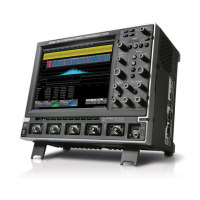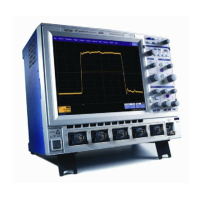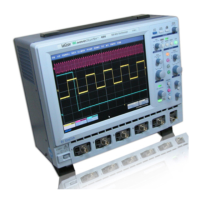262 WM-OM-E Rev I
These examples are purely illustrative, but you can easily imagine that with a VBScript you can add
value to the scope in a very short time. This gives you an instrument that does exactly what you
want, time after time, by using your stored setups and scripts.
What can you do with a customized instrument?
If you require a result that can be derived logically from the input waveform, you can do it. Many
calculations can be done with remarkably small scripts, but if you have no time for scripting, you
can use one of the proprietary packages, such as Excel, MATLAB, or Mathcad, which offer
immense processing power.
Scaling and Display
Scripting and programming allow a large variety of opportunities. You may, for example, be using
transducers. If so, you can change the units of your waveforms, and write N (newtons), J (joules)
and so on, and you can introduce scaling factors. If the transducers are non-linear, you can correct
for that, too. You can also transform horizontal scales and vertical scales by manipulating the data.
Logarithmic scales in amplitude and frequency are often required. Squaring and taking square
roots are needed in certain applications. Here is a picture showing some graphs related to white
noise, showing ways of detecting small deviations from the true distribution. The lower two graphs
were generated and placed in one trace using a VBScript.
In the next example, four graphs are placed in one trace.
Golden Waveforms
This is a rich field for VBS. An example was given earlier. The only limits to the shapes that can be
generated are the vertical resolution and the number of samples.
A practical example - DVI Data-Clock skew
The next example is a measurement of DVI Data-Clock skew jitter measurement, using a VBScript
to emulate the PLL. A solution to a practical measurement problem was shown earlier.
These are just a few of the many solutions that can be created.
